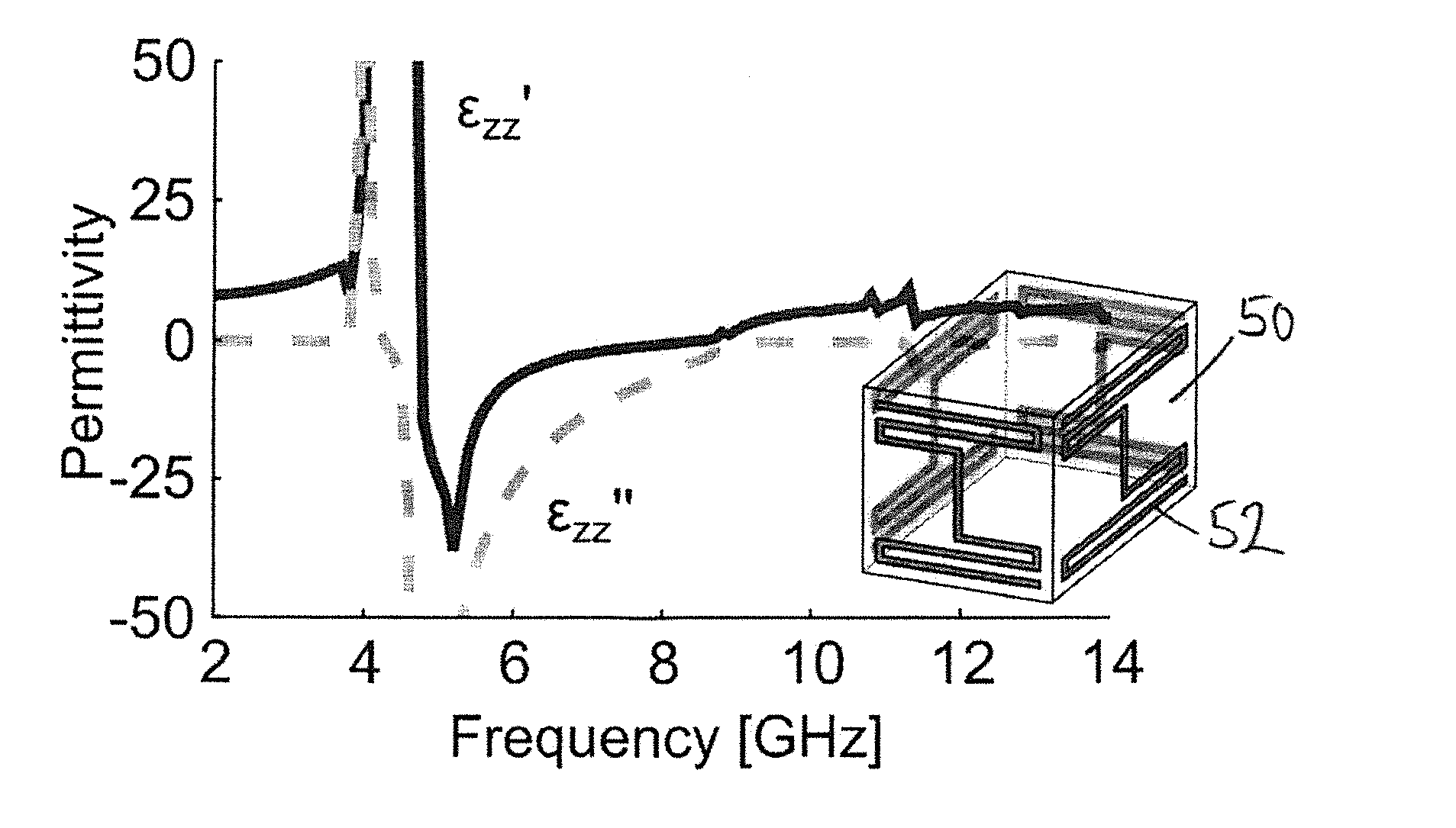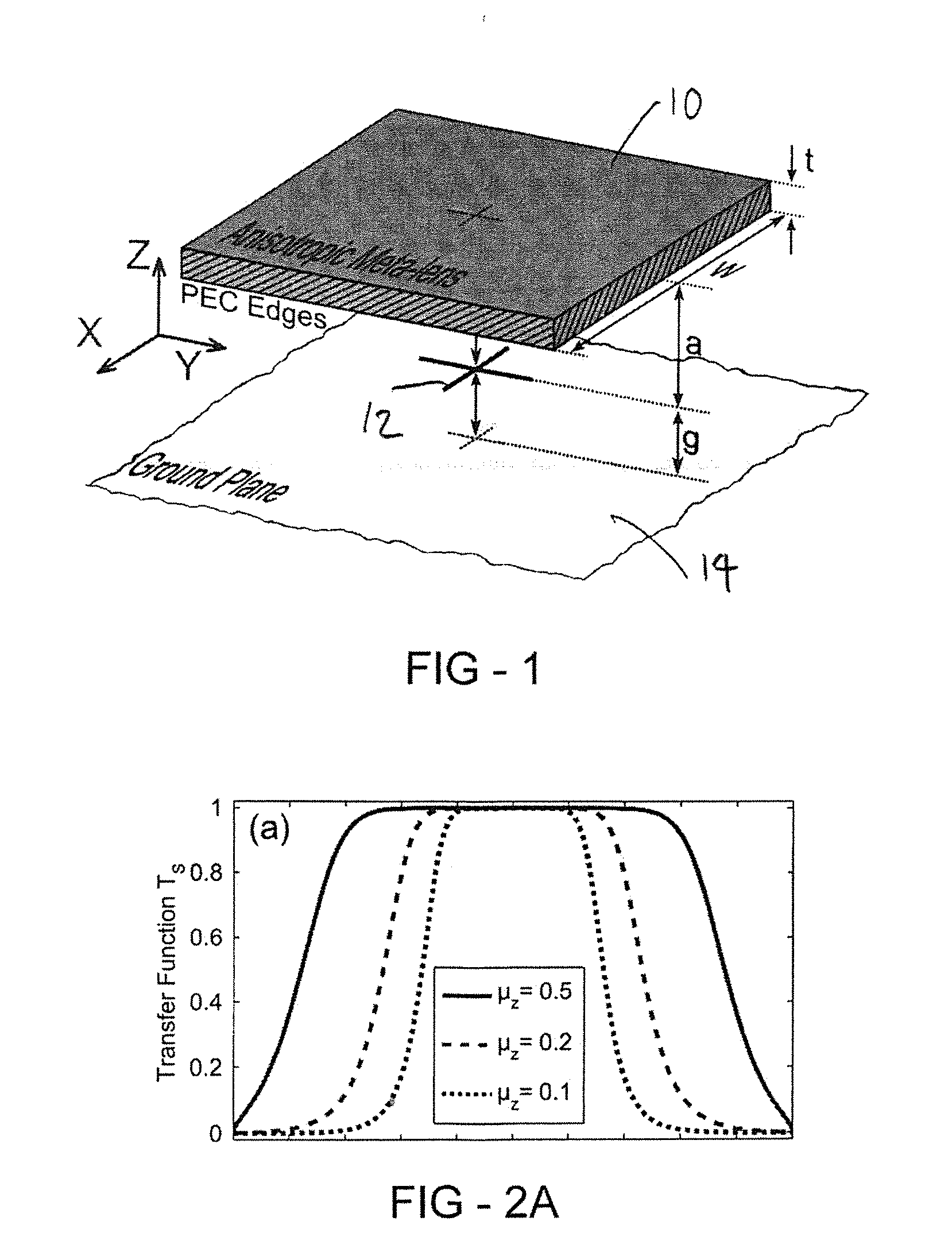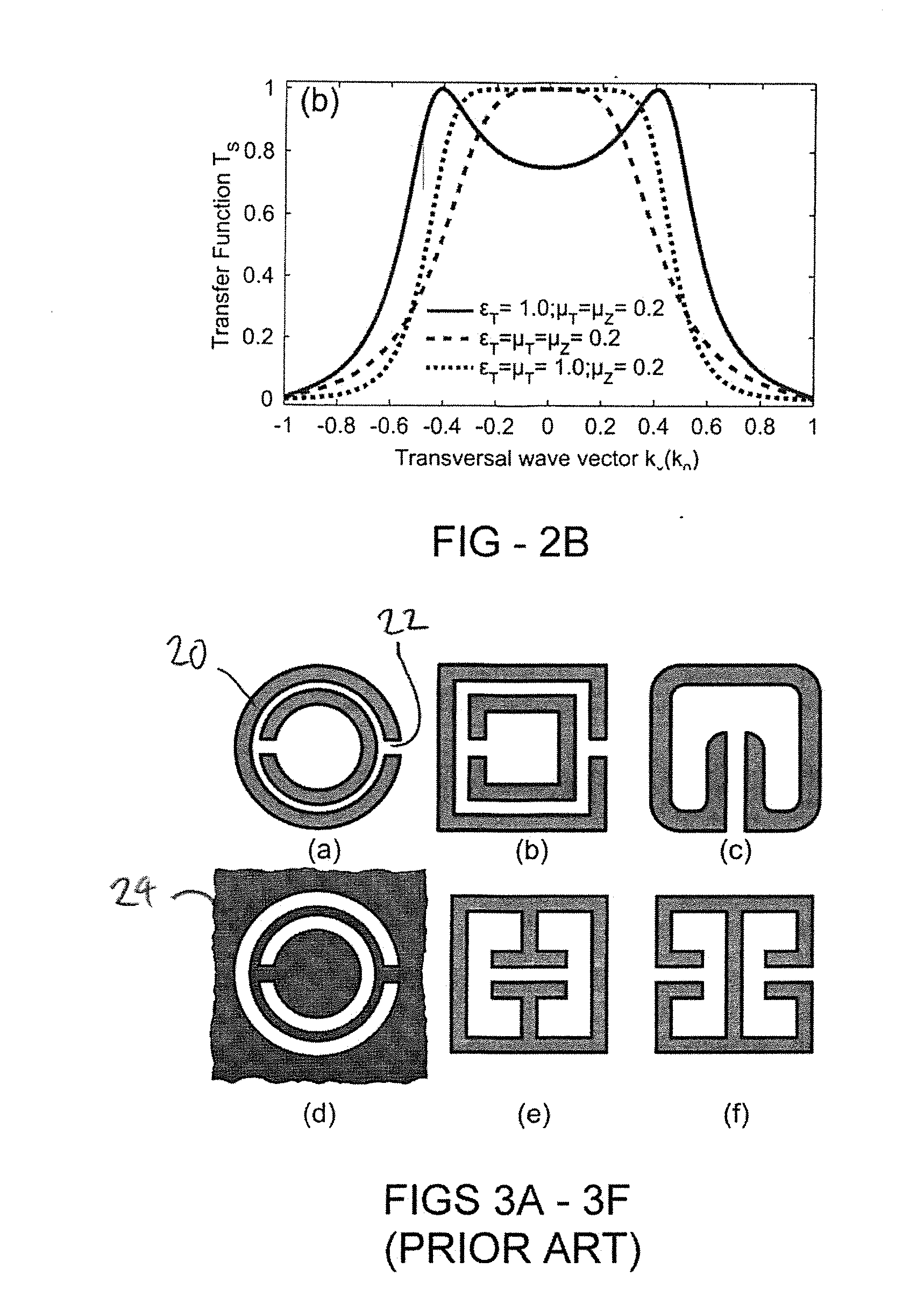Anisotropic metamaterial gain-enhancing lens for antenna applications
a metamaterial and gain-enhancing technology, applied in the field of metal materials, can solve the problems of large gain of horn antennas, antennas, array antennas, etc., and achieve the effect of improving the directionality of the antenna
- Summary
- Abstract
- Description
- Claims
- Application Information
AI Technical Summary
Benefits of technology
Problems solved by technology
Method used
Image
Examples
Embodiment Construction
[0032]Examples of the present invention include metamaterials, including metamaterial lenses having material properties that approximate the behavior of a material with low effective index of refraction n (e.g. 0<n≦1). Metamaterials may be designed and tuned using dispersion engineering to create a relatively wide-band low-index metamaterial lens, where permittivity and permeability normal to the lens face are less than 1, for example in the range 0-1, inclusive. The term meta-lens is sometimes used as an abbreviation for metamaterial lens, and LIM is sometimes used as an abbreviation for a low index lens. In some examples, the permittivity and permeability normal to the lens face are approximately zero, giving a zero-index metamaterial (ZIM) lens configuration.
[0033]An example metamaterial uses dual-split ring resonators (DSRR) in the x-y plane for a low permeability response, and end-loaded dipole (ELD) elements in the x-z and y-z planes for a low permittivity response. As εz or μ...
PUM
 Login to View More
Login to View More Abstract
Description
Claims
Application Information
 Login to View More
Login to View More - R&D
- Intellectual Property
- Life Sciences
- Materials
- Tech Scout
- Unparalleled Data Quality
- Higher Quality Content
- 60% Fewer Hallucinations
Browse by: Latest US Patents, China's latest patents, Technical Efficacy Thesaurus, Application Domain, Technology Topic, Popular Technical Reports.
© 2025 PatSnap. All rights reserved.Legal|Privacy policy|Modern Slavery Act Transparency Statement|Sitemap|About US| Contact US: help@patsnap.com



